Your presentation „Opening the eyes of the sighted“ recently earned enthusiastic applause at the 1zu1 Customer Day. How long have you known about 1zu1 Prototypes?
In 2010, when I published my book, I was approached by Manfred Reinalter, who owns an insurance company. He picked me up from Munich airport in person after I had just returned from the sixth of the seven summits in Antarctica. It was very emotional. A complete stranger picks you up at the airport. And he drew my attention to the innovative company 1zu1 Prototypes. That's how we became acquainted.
After your presentation at the 1zu1 Customer Day 2013, 1zu1 presented you with a 3D model of Mount Everest made in SLS PA. How can you use it?
The model is a beautiful thing. It makes the highest mountain in the world visible to me, because I can see with my fingers. My sense of touch is highly developed. The model helps me flesh out my understanding of Everest a little bit more. I can feel the valleys, the ascents, the steepness of the terrain. It gives me new „points of view“, i.e. new internal imagery.
„From 1zu1 I also received a 3D model of Mount McKinley. In 2008 I stood on the summit with my team. I had never fully understood that mountain before. The model helped me to finally `see the mountain properly and thus understand it better.“
When will you start the Everest expedition?
I've already been to the Himalayas twice, once in 2009 on Cho Oyu, at a height of 8,200 meters, and in 2011 I climbed the 8,027-meter-high Shisha Pangma in Tibet. Everest itself is not a major goal for me right now. I was on Mount Vinson in 2010, the sixth of the seven summits, and I thought Everest would be the logical next step, but then I had to postpone two fully prepared expeditions time and again for media-related reasons. I already had the whole team in place and I thought to myself, this is a total farce with all these postponements.
„I call the current phase ‘ski-slope mountaineering’. That's the big difference. Before these travel companies let their clients begin their ascent, they send up not just dozens, but a hundred Sherpa to prepare a fixed-rope climbing route. And it's better prepared than any fixed-rope route in the Alps ... The mountain is equipped with chains, ropes and ladders, and is therefore accessible to everyone. On the question of whether this is right or wrong, I'm fairly indifferent. It has nothing to do with traditional mountain climbing. People don't climb Hillary's Everest, nor mine. They climb another mountain, even if it is the same one geologically speaking.“
In your lecture you described the hurdles you had to overcome to climb mountains. A metaphor for corporate success?
Exactly. I had to pursue my dream of climbing mountains. During the actual climb itself, the team must work well together. I must be able to rely on my comrades. Trust is very important, as is the will to reach the summit and also to get back down again. 1to1 lives this culture within the company. It's evident every time I'm here in Dornbirn. An innovative company, with highly motivated employees.
Can modern technology help disabled people to achieve a better quality of life?
Yes, look at Hugh Herr, for example. His legs were amputated and he now wears high-tech leg prostheses when climbing. With him and Erik Weihenmayer I climbed the Preussturm in the Sexten Dolomites. Technology can already help to promote equal opportunities and increase participation for people with disabilities, and improve their quality of life.
In the future, disabled people will be supported by:
- intelligent spaces, in which the environment acts as a natural interface, which opens up a world of integrated, intelligent services
- miniaturization, including micro and nanotechnologies
- cognition and interfaces, such as interactive multimedia
- countless applications in robotics, mobile and satellite-based telephony, the internet, etc.
By 2020, the EU wants to take a big step forward by means of „design-for-all“ methods. All citizens will see, hear and feel the benefits of the Union's many initiatives, in the form of improved conditions for independent living, working and full social inclusion. European Commission, Research & Innovation
But for you, is mountaineering not just about reaching the summit?
I was just in Turkey at the Armenian border, where I climbed Mount Ararat on skis for charity. I climb a mountain once a year for blind people in the third world, whereby I encourage managers and my clients to do something with me. The net profits go directly to eye operations for blind people. A friend of mine, Markus Grassl, operates on people with cataracts himself. In 2010, for example, we were on Kilimanjaro, where I brought 19 out of 25 people to the summit. In 2012 I was on Mount Kenya and now in 2013 we're going to Chimborazo in Ecuador at 6,300 meters above sea level. These are all wonderful projects.
What is walking at high altitudes like? Climing in gullies with crampons or walking on snow or exposed ridges, isn't that a bit different to climbing in the Alps?
The higher you get, the slower each climber becomes. The slower the steps, the more milliseconds I have to analyze each step, to decide where to place the crampons. The higher we get, the easier I find it compared to the others. When I climb up to 3,000 m, everything takes place at high speed, I place my feet, bang, bang, bang, just like the others, at the same speed, but I never have time to analyze, it's much more strenuous. In the Himalayas, at high altitudes, I suddenly have the possibility to place each step in a way that is actually pleasant, because the pace of the group as a whole is slower.
„Exposure to danger is the fundamental difference between a sporting activity and an adventure.“
But does that also mean that you take responsibility for yourself when climbing?
Responsibility can serve as motivation in all situations in life. Including the world of work. If I feel valued as an employee, then I pay much more attention to what I'm doing. You can see that especially here with my hosts.
What are your upcoming plans or projects?
I'm now very busy with lectures, I increasingly find myself talking to interesting groups of decision-makers who involve me in major decisions. Of course, I would like to climb another new mountain; the difficult ones particularly appeal to me. Not sport climbing, but mountaineering. Or ski tours, I'm really good with skis because there's no risk of stumbling into things. On snow I suddenly don't need twice the power, like I do on other terrain. Maybe one day I'll get the urge to climb the highest mountain in Canada, Mount Logan, which is 5,959 meters high.
How important is your home for you?
East Tyrol is incredibly important to me as my home. It's very peaceful there. When I return home from a trip and go climbing in the Lienz Dolomites, it's just wonderful. The tour operators were asleep and in the end it was a positive experience. So I appreciate it even more. We have the Dolomites on our doorstep with the Grossglockner and Venediger mountains, and the Mediterranean's not far away. Unfortunately, there's no airport nearby. You can't have everything.
Do you have a favorite mountain?
Yes, the Laserz Wand here in the Lienz Dolomites. In winter you can climb it on skis and in summer there are countless long, steep climbing routes. Climbing the Laserz is like coming home, like the tiled stove the children like to climb on.
Andy Holzer is a blind mountaineer who climbs the world's highest peaks.
The interview was conducted by Hermann Braendle.
Andy Holzer: Balancing act – a blind man on top of the world. Patmos Verlag, 2012.
![[Translate to English:] [Translate to English:]](/fileadmin/_processed_/b/4/csm_1zu1-AndyHolzer_ModellMountEverest4_581915973e.jpg)
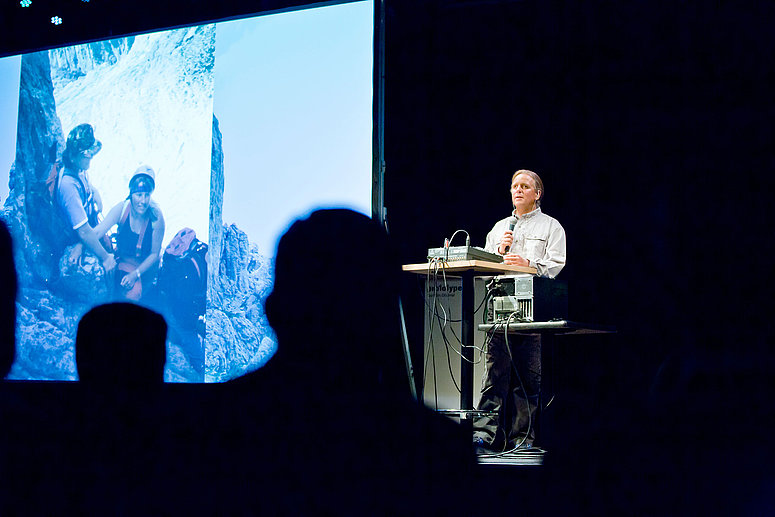
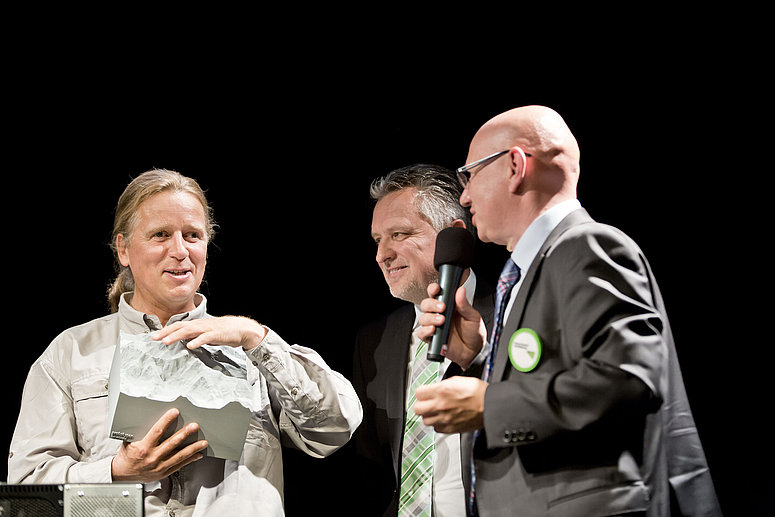
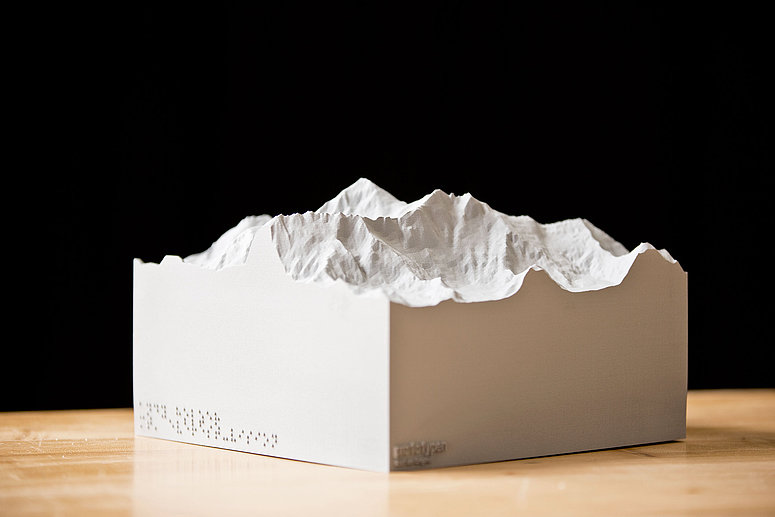
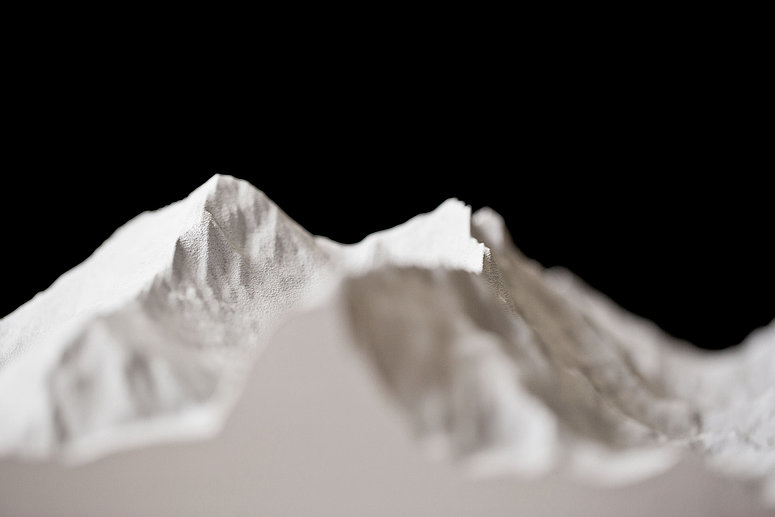
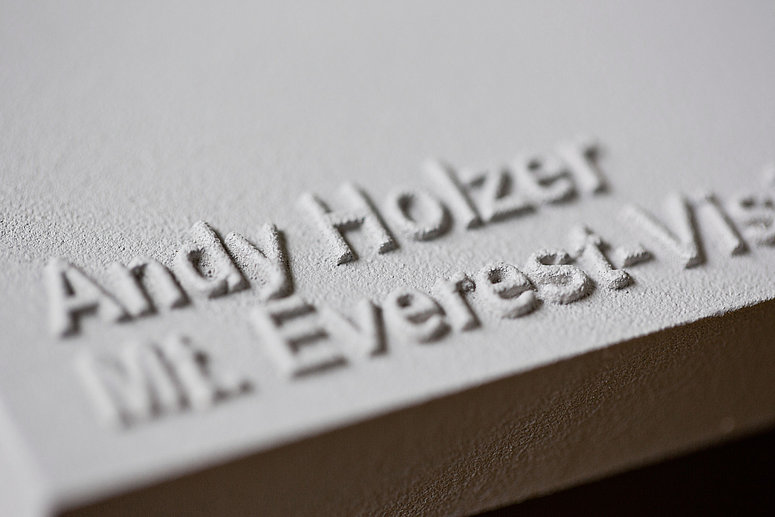
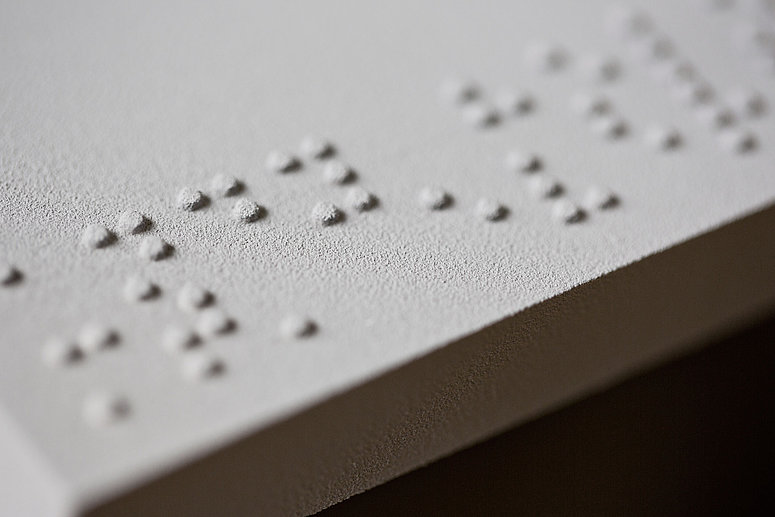
![[Translate to English:] 3D printing](/fileadmin/_processed_/e/3/csm_20220310_DAT_0323_1200Px_3bfc482c6c.jpg)
![[Translate to English:] Selective Laser Sintering (SLS)](/fileadmin/_processed_/e/c/csm_1zu1-Ameise-Header_b3d4651210.jpg)